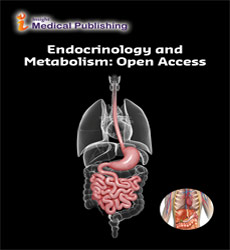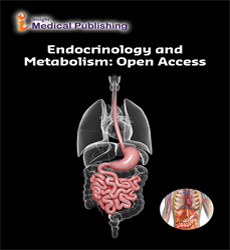Regenerative Medicine: Current and Future Directions
Lahiru Jayakody*
Department of Biosience and Biotechnology, National Renewable Energy Laboratory, USA
- *Corresponding Author:
- Lahiru Jayakody
Department of Biosience and Biotechnology
National Renewable Energy Laboratory, USA
E-mail: jayalahiru@yahoo.co.edu
Received Date: December 11, 2020; Accepted Date: December 24, 2020; Published Date: December 31, 2020
Citation: Jayakody L (2020) Regenerative Medicine: Current and Future Directions Endocrinol Metab Vol. 4 No.6:e001.
Editorial Note
Organ and tissue loss through disease and injury motivate the event of therapies which will regenerate tissues and reduce reliance on transplantations. Regenerative medicine, an interdisciplinary field that applies engineering and bioscience principles to market regeneration, can potentially restore diseased and injured tissues and whole organs. Since the inception of the sector several decades ago, variety of regenerative medicine therapies, including those designed for wound healing and orthopaedics applications, have received Food and Drug Administration (FDA) approval and are now commercially available. These therapies and other regenerative medicine approaches currently being studied in preclinical and clinical settings are going to be covered during this review. Specifically, developments in fabricating sophisticated grafts and tissue mimics and technologies for integrating grafts with host vasculature will be discussed. Enhancing the intrinsic regenerative capacity of the host by altering its environment, whether with cell injections or immune modulation, are going to be addressed, also as methods for exploiting recently developed cell sources. Finally, we propose directions for current and future regenerative medicine therapies.
Regenerative medication can possibly mend or supplant tissues and organs harmed by age, infection, or injury, additionally on standardize innate deformities. Promising preclinical and clinical information to date uphold the opportunities for treating both on-going illnesses and intense affronts, and for regenerative medication to abet ailments happening over a wide exhibit of organ frameworks and settings, including dermal injuries, cardiovascular infections and injuries, therapies for specific sorts of disease, and that's only the tip of the iceberg. The current treatment of transplantation of unblemished organs and tissues to treat organ and tissue disappointments and misfortune experiences restricted benefactor supply and in some cases serious resistant complexities, yet these deterrents may possibly be skirted through the usage of regenerative medication procedures.
The field of regenerative medication envelops various systems, including the usage of materials and again produced cells, additionally as different blends thereof, to require the spot of missing tissue, successfully supplanting it both primarily and practically, or to add to tissue recuperating. The body's intrinsic mending reaction can likewise be utilized to advertise recovery, albeit grown-up people have restricted regenerative limit as contrasted and lower vertebrates. This audit will initially talk about regenerative medication treatments that have arrived at the market. Preclinical and early clinical work to change the physiological climate of the patient by the presentation of materials, living cells, or development factors either to trade lost tissue or to improve the body's intrinsic mending and fix instruments will at that point be evaluated. Procedures for improving the underlying advancement of implantable unions and successfully utilizing as of late created cell sources additionally will be examined. At long last, expected future headings inside the field will be proposed. Because of the impressive cover in how scientists utilize the terms regenerative medication and tissue designing, we bunch these exercises together in this audit under the heading of regenerative medication.
Until this point, regenerative medication has prompted new, FDA- affirmed treatments becoming accustomed to treat assortment of pathologies. Impressive exploration has empowered the creation of refined unions that misuse properties of framework materials and cell control innovations for controlling cell conduct and fixing tissue. These platforms can be formed to fit the patient's life systems and be manufactured with significant command over spatial situating of cells. Procedures are being created to improve join incorporation with the host vasculature and systemic nervosum, especially through controlled arrival of development factors and vascular cell cultivating, and in this manner the body's mending reaction are regularly evoked and enlarged during such far, including framework tweak. New cell hotspots for transplantation that address the restricted cell supply that hampered numerous previous endeavours additionally are being created.
Various issues will be significant for the headway of regenerative medication as a field. To begin with, foundational microorganisms, regardless of whether secluded from grown-up tissue or prompted, will regularly require tight authority over their conduct to expand their wellbeing profile and adequacy after transplantation. The formation of microenvironments, frequently displayed on different substantial cell specialties that give explicit prompts, including morphogens and actual properties, or have the ability to hereditarily control target cells, will probably be critical to advancing ideal regenerative reactions from remedial cells. Second, the making of tremendous designed substitution tissues would require innovations that empower completely vascularized unions to be anastomosed with have vessels at the hour of relocate, permitting unite endurance. Thirdly, establishing a proregeneration climate inside the patient may significantly improve results of regenerative medication systems by and large. An improved comprehension of the safe framework's part in recovery may help this objective, as would advancements that advance an alluring insusceptible response. A superior comprehension of how age, illness state, and hence the micro biome of the patient influence recovery will probably even be significant for propelling the area as a rule. At long last, 3D human tissue culture models of sickness may permit testing of regenerative medication approaches in human science, as differentiated to the creature models at present used in preclinical examinations. Expanded precision of infection models may improve the adequacy of regenerative medication procedures and upgrade the understanding to the facility of promising methodologies.

Open Access Journals
- Aquaculture & Veterinary Science
- Chemistry & Chemical Sciences
- Clinical Sciences
- Engineering
- General Science
- Genetics & Molecular Biology
- Health Care & Nursing
- Immunology & Microbiology
- Materials Science
- Mathematics & Physics
- Medical Sciences
- Neurology & Psychiatry
- Oncology & Cancer Science
- Pharmaceutical Sciences
